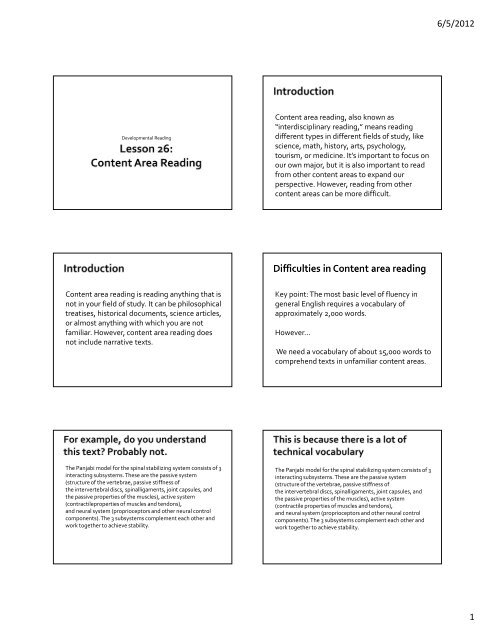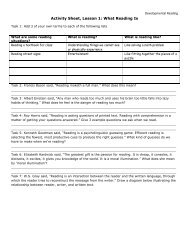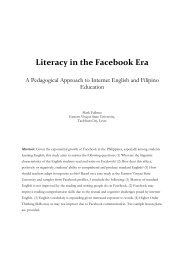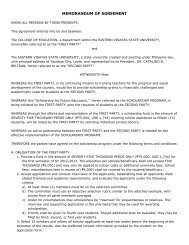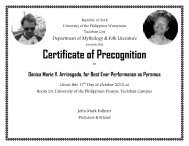PDF handout of the 32 Powerpoints - Mark Fullmer
PDF handout of the 32 Powerpoints - Mark Fullmer
PDF handout of the 32 Powerpoints - Mark Fullmer
Create successful ePaper yourself
Turn your PDF publications into a flip-book with our unique Google optimized e-Paper software.
6/5/2012Developmental ReadingContent area reading, also known as“interdisciplinary reading,” means readingdifferent types in different fields <strong>of</strong> study, likescience, math, history, arts, psychology,tourism, or medicine. It’s important to focus onour own major, but it is also important to readfrom o<strong>the</strong>r content areas to expand ourperspective. However, reading from o<strong>the</strong>rcontent areas can be more difficult.Content area reading is reading anything that isnot in your field <strong>of</strong> study. It can be philosophicaltreatises, historical documents, science articles,or almost anything with which you are notfamiliar. However, content area reading doesnot include narrative texts.Key point: The most basic level <strong>of</strong> fluency ingeneral English requires a vocabulary <strong>of</strong>approximately 2,000 words.However…We need a vocabulary <strong>of</strong> about 15,000 words tocomprehend texts in unfamiliar content areas.The Panjabi model for <strong>the</strong> spinal stabilizing system consists <strong>of</strong> 3interacting subsystems. These are <strong>the</strong> passive system(structure <strong>of</strong> <strong>the</strong> vertebrae, passive stiffness <strong>of</strong><strong>the</strong> intervertebral discs, spinalligaments, joint capsules, and<strong>the</strong> passive properties <strong>of</strong> <strong>the</strong> muscles), active system(contractileproperties <strong>of</strong> muscles and tendons),and neural system (proprioceptors and o<strong>the</strong>r neural controlcomponents). The 3 subsystems complement each o<strong>the</strong>r andwork toge<strong>the</strong>r to achieve stability.The Panjabi model for <strong>the</strong> spinal stabilizing system consists <strong>of</strong> 3interacting subsystems. These are <strong>the</strong> passive system(structure <strong>of</strong> <strong>the</strong> vertebrae, passive stiffness <strong>of</strong><strong>the</strong> intervertebral discs, spinalligaments, joint capsules, and<strong>the</strong> passive properties <strong>of</strong> <strong>the</strong> muscles), active system(contractile properties <strong>of</strong> muscles and tendons),and neural system (proprioceptors and o<strong>the</strong>r neural controlcomponents). The 3 subsystems complement each o<strong>the</strong>r andwork toge<strong>the</strong>r to achieve stability.1


